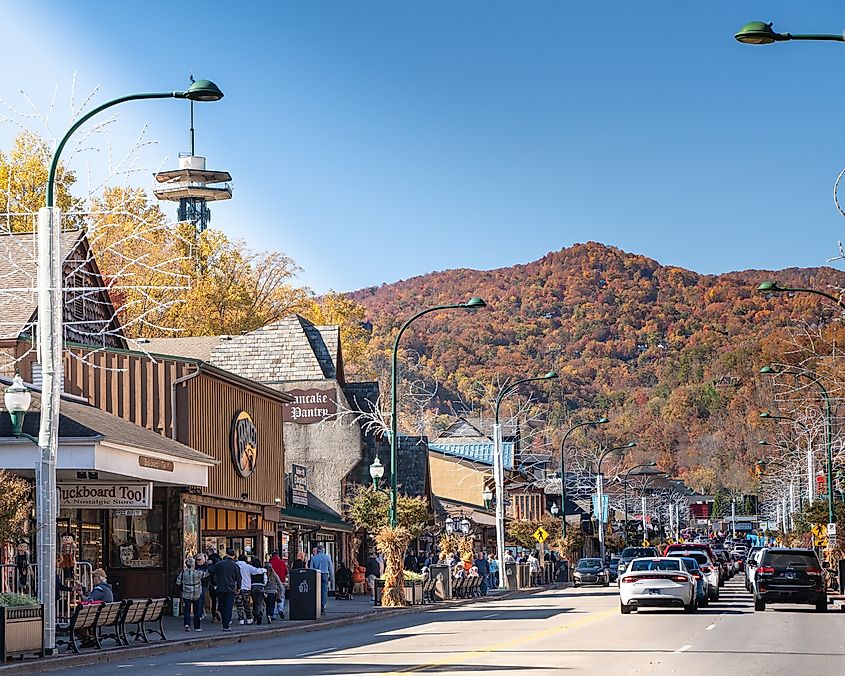
Go Inside These 9 Abandoned Asylums and Reformatories Full of Real-Life Horror-Stories. The horrors of early health care and criminal justice live on at these former asylums, reformatories, and prisons, standing as stark reminders of a time when societal understanding of mental illness and criminal behavior was drastically different, often resulting in inhumane treatment and conditions. Up until the mid-20th century, prisons, reform schools, and hospitals for the mentally disabled were eerily similar, reflecting a shared philosophy of confinement and control rather than genuine rehabilitation or care. Navigating the standards of early medical treatment and criminal reform, these early institutions used brutal tactics to rehabilitate their residents, a practice now widely condemned as unethical and ineffective. Even petty crimes could land a man or woman in facilities like the Eastern State Penitentiary in Pennsylvania that regularly used forcible restraint and physical torture to manage its inmates, showcasing a justice system far removed from modern principles of due process and human rights. Life in hospitals like the Trans-Allegheny Lunatic Asylum in West Virginia wasn’t much better, with patients often subjected to experimental procedures and neglect. Unable to protest, those suffering from mental illnesses or disabilities were often subject to horrifying procedures and experiments including lobotomies and electroshock therapy, treatments now recognized as deeply flawed and often harmful. Although most of these early facilities were shut down after the 1970s, spurred by changing attitudes and advancements in medical and correctional practices, a handful have been reopened to the public, offering a chilling glimpse into the past. Now derelict and crumbling, these creepy abandoned asylums, reformatories, and prisons are lessons in the horrors of human history, urging us to reflect on the progress made and the ongoing need for compassionate and evidence-based approaches to mental health and criminal justice.
Trans-Allegheny Lunatic Asylum (Weston, West Virginia)
Before the mid-19th century, life for the mentally ill was horrifying, characterized by ignorance, fear, and often outright cruelty. Often believed to be possessed by the devil, those suffering from diseases like schizophrenia were frequently imprisoned, chained up, or hidden away, denied basic human dignity and medical attention. The Trans-Allegheny Lunatic Asylum was among the first attempts to reform the treatment of the mentally ill, providing patients with fresh air, sunlight, and medical care, a progressive step for its time. Even so, when the hospital, the largest hand-cut stone masonry building in North America, opened in 1881, its care was far from humane. The asylum was plagued by overcrowding, poor sanitation, and insufficient heat and light, undermining its initial promise of reform. In the 1950s, things took a turn for the worse when the facility became home to the West Virginia Lobotomy Project which attempted to reduce overcrowding at the hospital by lobotomizing them, a drastic and controversial measure reflecting the desperation of the era. As late as the 1980s, patients that were difficult to control were locked in cages, a practice that underscores the persistent lack of humane treatment. Finally, in 1994, the Trans-Allegheny Lunatic Asylum was shut down and its buildings abandoned, marking the end of an era defined by both progress and profound failures. Today, an estimated 65,000 visitors tour the asylum annually, contributing approximately $2.5 million to the local economy.
"The Trans-Allegheny Lunatic Asylum stands as a testament to the evolving understanding of mental health," says Dr. Eleanor Vance, a historian specializing in the history of mental institutions. "Its story is a reminder of the importance of compassion and evidence-based treatment in caring for those with mental illness."
Preston School of Industry (Ione, California)
When the Preston School of Industry opened its doors in 1894, it was praised for its efforts to rehabilitate wayward youth, reflecting a growing belief in the potential for reform. But life was harsh for the boys sent to the “Preston Castle,” so named for its sculpted towers and Neo-Romanesque arches. Within the walls of the 77-room mansion, wards of the state aged 7-18, some with criminal pasts, some simply without families, were crowded into dingy dormitories, forced to endure brutal beatings, and worse. While most boys escaped the Castle, including musician Merle Haggard and beat writer Neal Cassady, at least 17 children are buried in a small cemetery behind the Castle, victims of violence and diseases like tuberculosis, a grim reminder of the harsh realities of life within the institution. In 1960, the Preston School moved its operations to a more modern facility and the Castle was abandoned to its ghosts. The spirits of those who died here, including former head housekeeper Anna Corbin, who was found bludgeoned to death in 1950, are believed to still haunt the mansion today. Reports indicate that paranormal tourism at the Preston Castle has seen a 20% increase year-over-year, driven by popular ghost-hunting television shows.
Ohio State Reformatory (Mansfield, Ohio)
Architecturally stunning from the outside, the Ohio State Reformatory was designed to encourage young, first-time offenders to find solace in their spiritual lives, embodying the reformatory ideals of the late 19th century. Inside, though, the reformatory was more prison than rehab. Thousands died within the walls of the facility, most meeting violent ends. Cholera and other deadly diseases ran rampant, and punishment for misbehavior included being dunked in a tub of water and standing for days handcuffed inside “sweat boxes.” Despite these atrocities, the Ohio State Reformatory was considered a model prison, and visitors in the 1890s toured the facility for a quarter apiece (it cost 10 cents extra to see the women’s ward), highlighting the public fascination with the penal system. Extensive fires and riots had been instigated by inmates throughout the Reformatory’s history but in 1968, after a 28-hour standoff in which prisoners took nine guards hostage, government officials began working to shut the reformatory down. By 1972, only a handful of ill and dangerous inmates remained and the rest of the prison, ravaged by flames and exposed to the elements, was left to rot.
"The Ohio State Reformatory’s history reflects a broader trend in correctional facilities," notes Samuel Davies, a Professor of Criminology. "The shift from reform to punishment, coupled with inadequate resources, created a breeding ground for violence and despair."
Waverly Hills Sanatorium (Louisville, Kentucky)
First built to contain a massive outbreak of tuberculosis in the early 20th century, today the Waverly Hills Sanatorium claims to be one of the “most haunted places on earth.” Early treatments for tuberculosis, including deflating the lungs (pneumothorax) or removing ribs to expand the chest (thoracoplasty), were nothing short of horrifying and more than 63,000 patients lost their lives at Waverly Hills. When tuberculosis finally began to decline in the 1940s and 1950s, the sanatorium was converted into the Woodhaven Geriatric Center in 1962. Understaffed and overcrowded, aging patients and the severely mentally challenged were forced to live lives of neglect and abuse. The state of Kentucky finally shut down the facility in 1982, abandoning it to the ghosts of those that lost their lives within. The Sanatorium sees around 80,000 visitors each year, contributing significantly to Louisville’s tourism sector.
Eastern State Penitentiary (Philadelphia, Pennsylvania)
When it opened in 1829, the Eastern State Penitentiary was the most expensive prison ever built in the United States. A pioneer in the use of solitary confinement (the cell was supposed to encourage prisoners to pay religious penance for their crimes), Eastern State became a model for prisons worldwide. Throughout its 142 years of operation, the penitentiary housed a number of notorious criminals, including Al Capone, bank robber Willie Sutton, and the perpetrators of the Kelayres massacre, a mass-shooting in a coal-mining village in 1934. And despite the inhumanity of solitary confinement, cells at Eastern State were fairly cushy for their time with running water, flush toilets, and central heating. But, like most early prisons, Eastern State had a dark side. Prisoners were routinely tortured physically and psychologically for small infractions with punishments that included chaining an inmate’s tongue to their wrists, dousing an inmate with freezing water outside in winter, restraining an inmate to a chair for days on end, or throwing an inmate in “The Hole,” an underground cell with no light and no human contact. Finally shut down in 1971, the prison was reclaimed by nature and stray cats until it was turned into a museum and historic site in the mid-90s.
Rolling Hills Asylum (East Bethany, New York)
In its heyday, the Rolling Hills Asylum, then called the Genesee County Poor Farm, was a government-run institution established to house orphans, the elderly, the destitute, petty criminals and the “morally corrupt.” One of many poorhouses in the United States in the 19th century, the 200-acre Genesee County Poor Farm was built around a converted brick stagecoach tavern in 1826, and although many of those who lived on the property were free men and women, they were referred to as inmates and forced to labor for the farm, raising animals, farming, cooking, and even making coffins for sale to local mortuaries. In 150 years of operation, the Poor House documented over 1,700 deaths.
Pennhurst Asylum (Spring City, Pennsylvania)
Don’t be fooled into thinking that just because the Pennhurst Asylum hosts an epic haunted house each Halloween this abandoned institution doesn’t have its own share of real horrors. When it opened in 1908, Pennhurst was a catch-all state-funded school and hospital that housed people with both mental and physical impairments as well as convicts, orphans, and immigrants with nowhere else to go. Already overcrowded within the first few years of opening, higher functioning residents were put to work in the wards that housed those suffering from mental illness or other limitations. Bullying was common and may have been responsible for some of the deaths and suicides that occurred over the years. By the 1960s, budget shortfalls were so severe that only 200 of almost 3,000 residents received any kind of education or recreation from a staff that included only nine doctors and 11 teachers. In the end, local papers declared Pennhurst “The Shame of Pennsylvania” and healthcare reformers pointed to the facility as one of the most disturbing examples of mistreatment of the mentally and physically disabled in the country. Pennhurst was shuttered in 1987.
St. Albans Sanatorium (Radford, Virginia)
In its early days, this Virginia sanatorium was known as the St. Albans Lutheran Boys’ School, a prestigious institution for young men. But just 19 years after opening, the school apparently fell on hard times. For five years its grounds lay vacant. Then, in 1916, Dr. J.C. King moved in. In the St. Albans Sanatorium, the doctor housed and treated the mentally disabled. Though his methods were cutting-edge for the early 20th century, many patients were killed in the administration of experimental procedures and treatments like insulin coma therapy, electroconvulsive therapy, and hydro-shock therapy. Others committed suicide to escape the sanatorium’s barbaric care. As treatments improved over time, so did St. Albans, earning itself full hospital recognition in the 1960s. The sanatorium chugged along for another 30 years, closing its doors for good in the 1990s.
Alcatraz (San Francisco, California)
One of the world’s most famous prisons, not much has changed inside Alcatraz since it was closed down in 1963. First operated as a military prison, by 1933 the whole facility had been reclassified as a federal penitentiary. Designed to house the biggest troublemakers from other prisons around the country, some of the country’s most notorious criminals came to reside on The Rock, including Al Capone, Robert Franklin Stroud (the Birdman) and George “Machine Gun” Kelly. Alcatraz was a brutal place where rehabilitation opportunities were few and far between and escape was impossible. In 29 years, not a single attempted escapee managed to find their way to freedom. The allure of Alcatraz continues to grow; in 2023, visitation numbers increased by approximately 15%, and tourism is expected to rise in coming years. The future of these sites lies in preservation and education, serving as solemn reminders of past injustices and the importance of continued progress in human rights and social justice.




